With the range of narrow gauge kits ever expanding, Luke Ryan recounts the story of some of the Talyllyn Railway’s early preservation attempts to increase capacity on its trains, with the focal pair now available from Fourdees Models.

The Talyllyn Railway was the first to be preserved in the world, kicking off the heritage railway movement as we know it – however, there is something quite different that comes to the forefront when comparing the TR to other heritage lines around the country. Unlike the vast majority, the Talyllyn has never had a break in operation; it has continuously ran since opening in 1865, so when the Talyllyn Railway Preservation Society took over in 1951 it was all still there – in need of love, sure, but basically intact. Both locomotives built for the railway at its inception were present, though only the one, Fletcher Jennings 0-4-0WT No. 2 Dolgoch, was operational and the full carriage rake, all dating from 1866, was still in use. There was no need to recreate anything as it had not been lost.
JIC Boyd once wrote that he felt the Talyllyn Railway Preservation Society had rather become the Talyllyn Railway Perpetuation Society, and I think, to a degree, that is very much the case – the railway was treated as just that, a railway company that needed to keep going. Rather than trying to recreate the past, the TRPS forged on and continued to write the history of the railway, and still does to this day.
Enjoy more Heritage Railway reading in the four-weekly magazine.
Click here to subscribe & save.
The society had acquired two new locomotives from the nearby Corris Railway to assist the ageing Dolgoch and passenger numbers were very much on the rise – more carriages were needed. With the odd gauge of 2ft 3in and no real narrow gauge alternative to the trusty and reliable Mk.1s we see across the UK’s heritage lines, the Talyllyn took to building its own coaches.

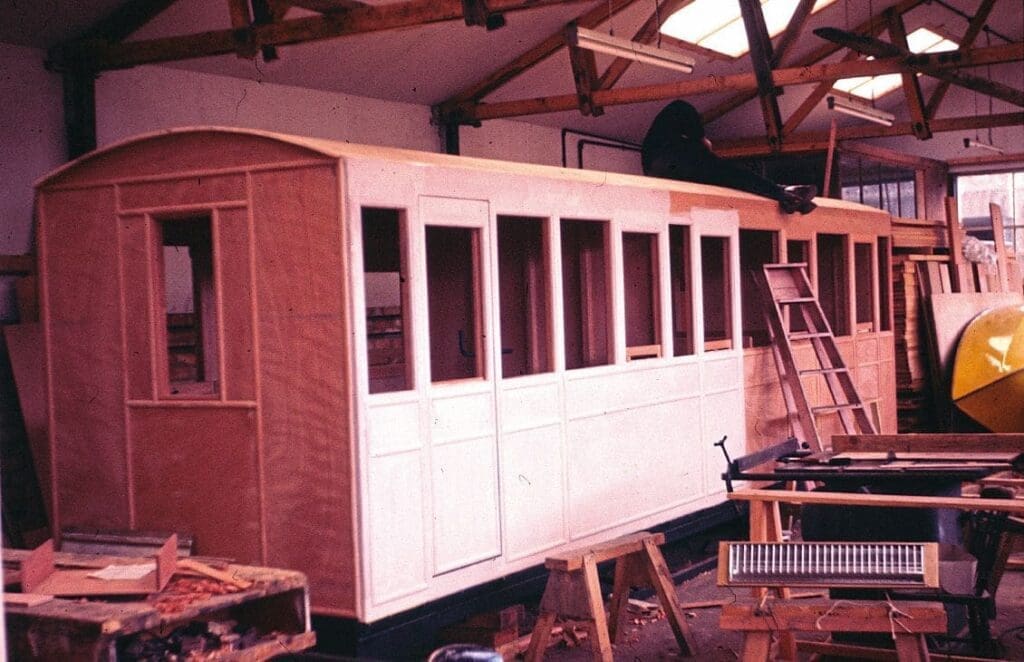
‘Pioneering’ carriages
By 1954, the TR had expanded its coaching stock with a brake van from the Corris Railway and two ex-Penrhyn Quarry open coaches, bringing the total to eight. However, there was a demand for more covered stock and, of course, more seats. A Mr Ralph Weddell thought he may have a solution: he was a director of the firm WG Allen Ltd of Tipton and had recently built some 2ft 6in gauge man-riders for the National Coal Board. He took it upon himself to suggest to TR management that something similar to the design could be built cheaply for the railway, and soon he was given the approval to build two new underframes with all the Talyllyn accoutrements, such as an adapted frame for side buffers rather than centre coupling.
The frames were delivered on April 23, 1954, one with a handbrake and the other without. They were immediately taken up the line on a very successful trial, and were just as quickly kitted out with bodies. Coach No. 9 was the first to enter service, only a day after the chassis had arrived, having two ex-Penrhyn Quarry coach bodies bolted together and fitted to the chassis by John Bate. This was also the plan for Coach No. 10, however, the two remaining Penrhyn bodies were so badly dilapidated that a semi-open body and five compartments, plus a guard’s compartment on the Abergynolwyn end, was quickly under construction by the design of Chips Harrison. The body for No. 10 took Chips six weeks to put together and the coach entered service on Whit Monday in 1954 with the paint still wet!
While perhaps looking very primitive to our modern eyes, these were cutting-edge – the first-ever bogie stock on the Talyllyn in its then 90-year history! No. 9’s Penrhyn-based body was quickly replaced in 1955 with a similar semi-open design to that of 10s, also built by Chips. Due to the nature of the design, and them being perhaps a little flimsy, they very quickly accrued the nickname of the Cardboard Coaches!
Coaches Nos. 9 & 10 soldiered on through the heaviest of traffic the 1950s could throw at the TR, until one fateful day in September 1965 when a guard put his foot through the floor. Upon closer inspection, it was found that Coach 10 had extensive rot along the bodysides and in the floor. It was patched up to get it through the rest of the season, and finally the body was demolished on September 27, 1965. In early 1966, both coaches had some remedial work done to the chassis, which had bowed upwards in the middle. With this, No. 9’s semi-open body was removed, leaving both coaches in need of new ones.
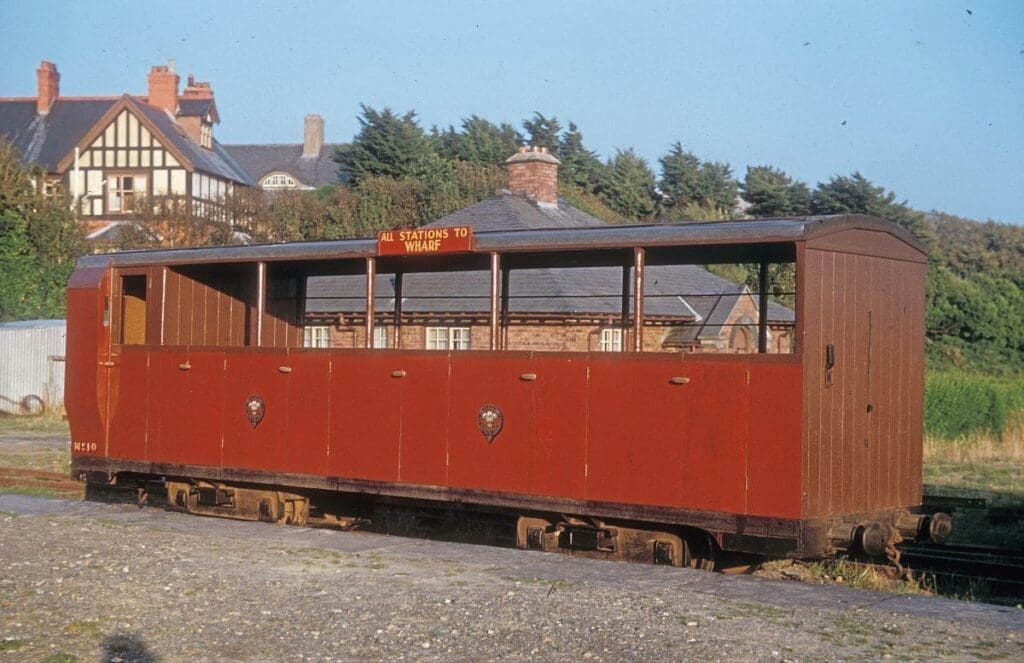
Modern fleet blueprint
At the time, the Talyllyn was looking at an affordable and economic design for new bogie coach stock. After many enquiries, the then chief engineer, John Bate, came across Raymond Tisdale & Co, a timber merchant whose managing director just so happened to be a railway enthusiast. Very soon the chassis for No. 10 was sent to Tisdale’s and a completely new body to an entirely new design began construction. On March 30, 1967, it returned to the TR looking completely renewed. Glazing and painting began, and it entered service on July 3 that same year, creating the blueprint for the ‘standard’ Talyllyn bogie coach going forward. Coach No. 9 followed suit and was fitted with a new Tisdale body in time for the 1968 season.
No. 9 was still fresh-faced when it got into its first incident, however; on July 6, 1968, as No.2 Dolgoch was propelling coaching stock down to Tywyn Wharf from Pendre, the screw link coupling managed to slip off the shallow hook on the front coach and the rake of coaches ran away from the locomotive. When they got to the short 1-in-60 grade immediately before Wharf, the rake accelerated rapidly and hit the buffer stops with an almighty crash. Coach No. 9 took damage on the Abergynolwyn end, with Coach No. 15’s iron steps creating some lovely slots in the new bodywork, along with breaking the body pillars. Thankfully, as with the other damaged vehicles, coach No. 9 was back in service looking brand new within a week.
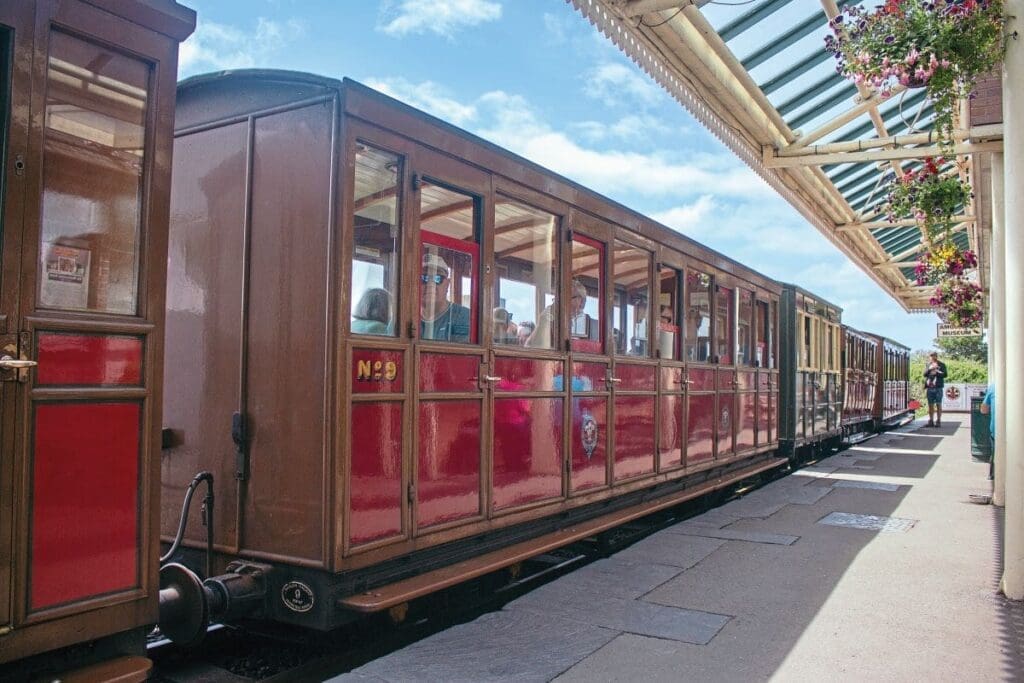
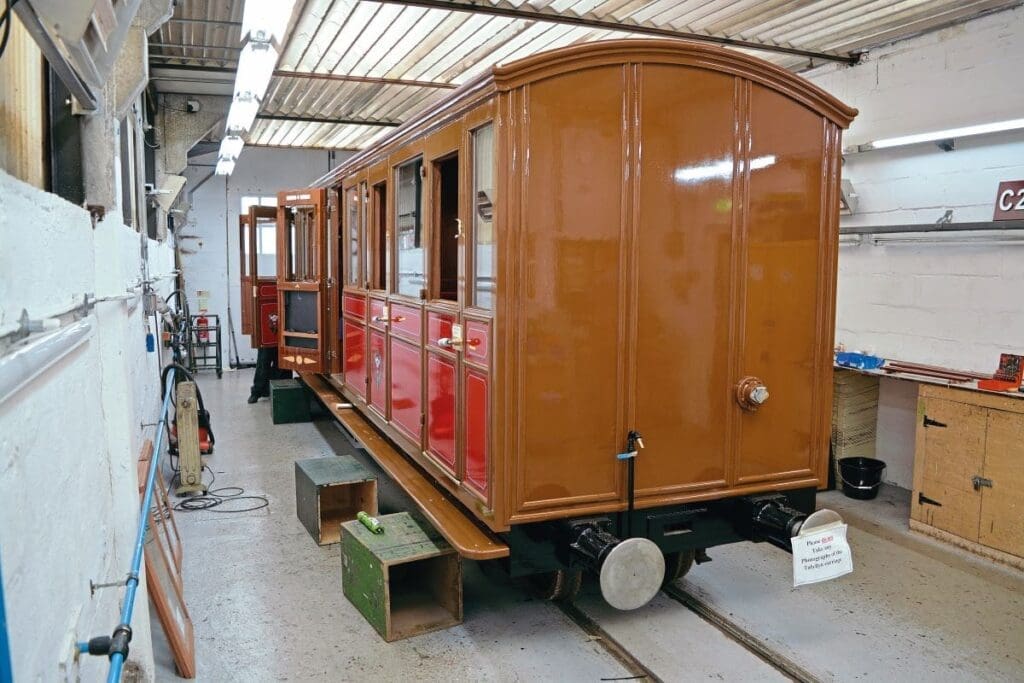
Tisdale would go on to provide the bodies for coaches Nos. 16, 19, 20, 21, 22 and 23 – and in true Talyllyn fashion, they are all slightly different! The legacy of Tisdale certainly still lives on at the TR, with three new coaches currently being built at the Ffestiniog & Welsh Highland Railway’s carriage works to the same general design, albeit on a bit of a higher budget. The first of these new coaches, No.24, should be very close to arriving on the TR by the time you are reading this article.
Coaches Nos. 9 and 10 have remained largely unchanged since they entered service, with one visual change being the Train Alarm System – an electrical connection that once broken anywhere down the train would sound an alarm in the guard’s van to alert a split in the train – changing to the Train Communication System, which allows the guard and footplate crew to communicate to each other through a buzzer, much like you get on modern-day DMUs.
The biggest change to the coaches, though, would be the fitting of continuous air braking equipment to all TR stock in the 1990s and early 2000s – only about 110 years after the Regulation of Railways Act 1889 made them mandatory by law.
These things do take time, you know…
The models
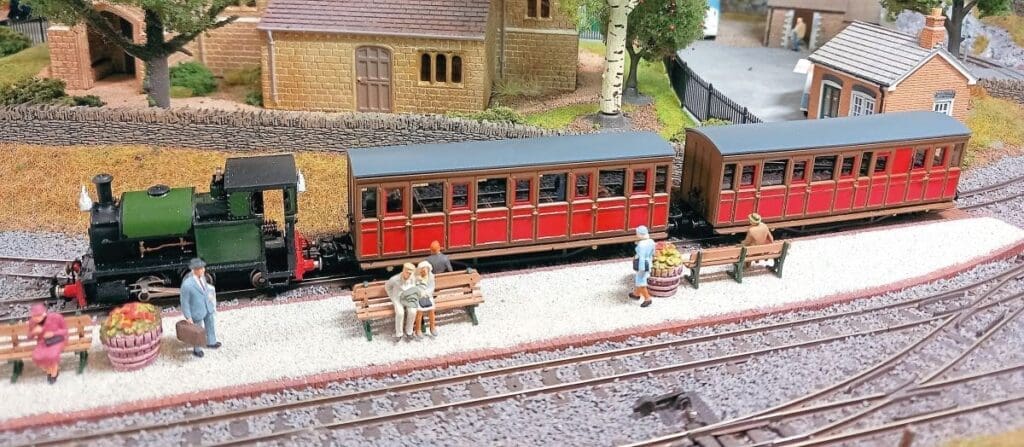
Perhaps slightly unconventionally for the Heritage in Miniature series, we’re taking a look at kits – and more specifically, garage kits from an independent manufacturer. Fourdees Limited has been providing ready-to-run hand-built 3D-printed locomotives for a good number of years now but has only relatively recently expanded into the kit market with locomotive body shells to fit on pre-existing motorised chassis and, more recently, rolling stock.
The newest addition to its range are these wonderful kits of Talyllyn coaches Nos. 9 & 10, which represent the carriages in their current running condition with air brake equipment on the underframe, air hoses, and Train Communication System cables preset. Of course, if someone wanted to modify these to represent the coaches as they were between the late 1960s and early 1990s, all it would take is to snip the brake pipes off and remove the equipment from underneath. With minimal effort, the kit can represent, essentially, the entire life of the coaches with their Tisdale bodies.
Each coach comes in five main component parts: the roof, the body, the interior, the chassis and the bogies. Minimal clean-up of the 3D-printed parts is needed, as the print quality is excellent – a quick pass of sandpaper over the more obvious print lines will be more than enough to make them very presentable indeed. The interior is fully detailed and accurate to the real coaches, including the guard’s compartment in No. 10 – complete with fold-down seats, desk and handbrake.
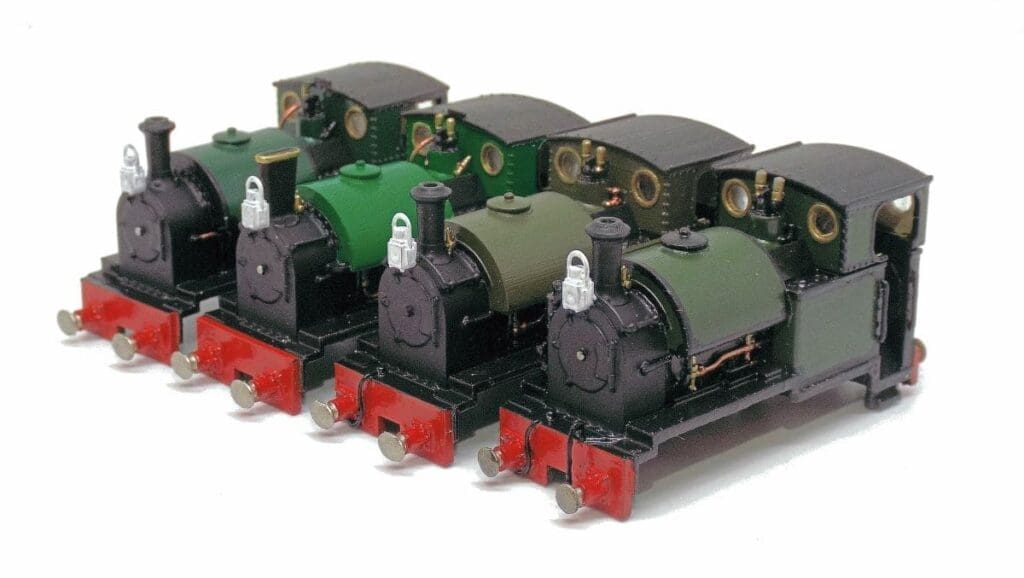
The bogies aren’t just off-the-shelf items either; these are also 3D-printed and are completely accurate to the TR designed bogies that run under both vehicles. The kit also comes complete with clear plastic glazing for the windows and plastic wheels to fit into the bogies; of course, some modellers may wish to add their own metal wheels in place of these to aid with weight.
Coaches Nos. 9 and 10 are now available as a double pack. At the time of writing, they are available for £69.99 from both Fourdees online and the Talyllyn Railway shops. A perfect companion to the coaches is Fourdees’ TR No.2 Dolgoch or TR No.4 Edward Thomas locomotive body kits, designed to fit on the Bachmann USA Thomas & Friends range Rheneas and Peter Sam chassis respectively.
For a beginner or a seasoned kit-building pro, these are the perfect way to quickly bolster your Talyllyn, or indeed freelance, carriage rakes.
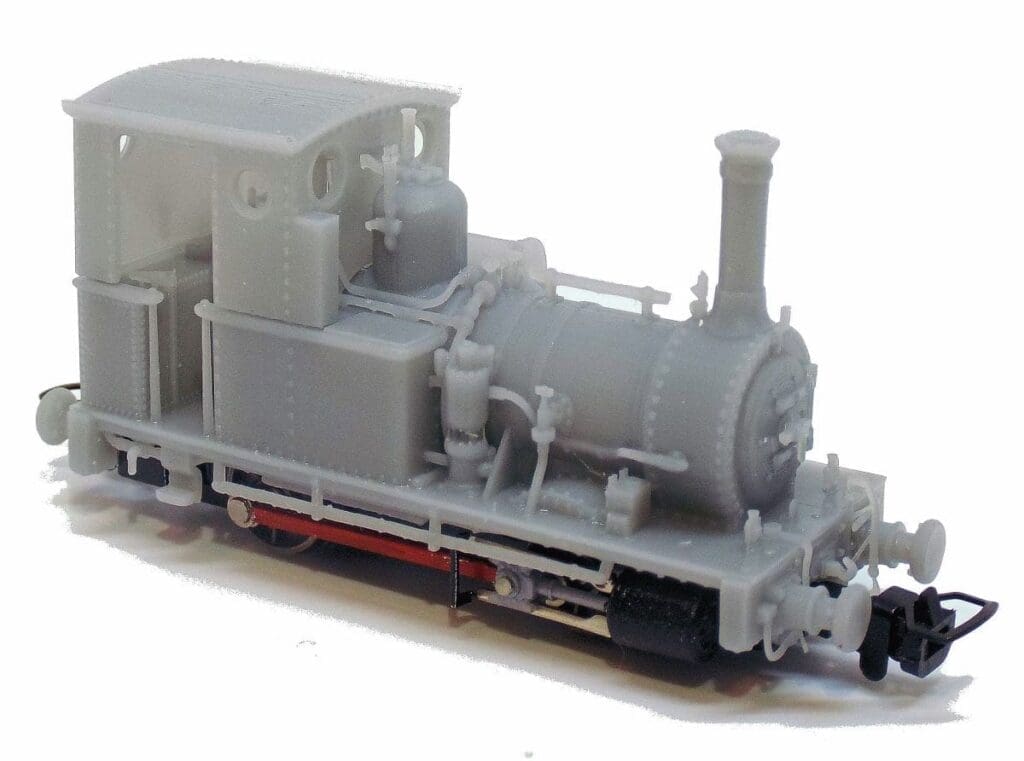
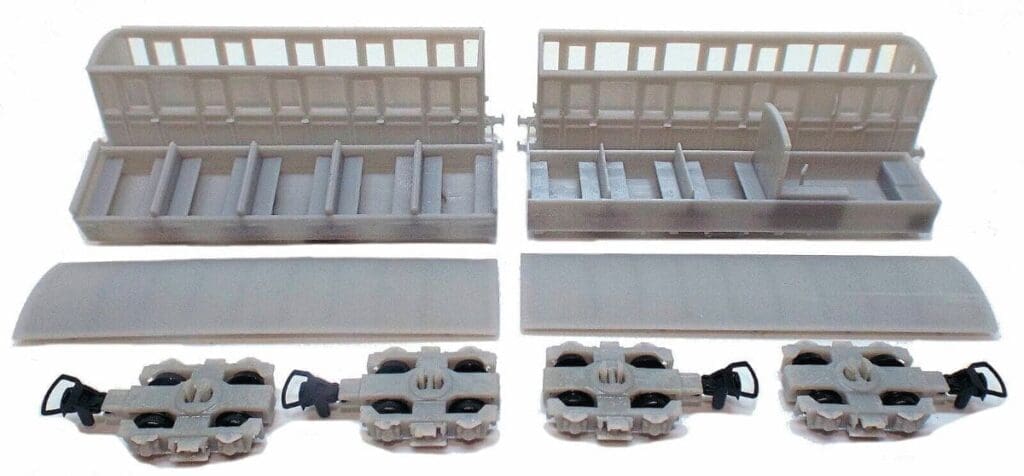
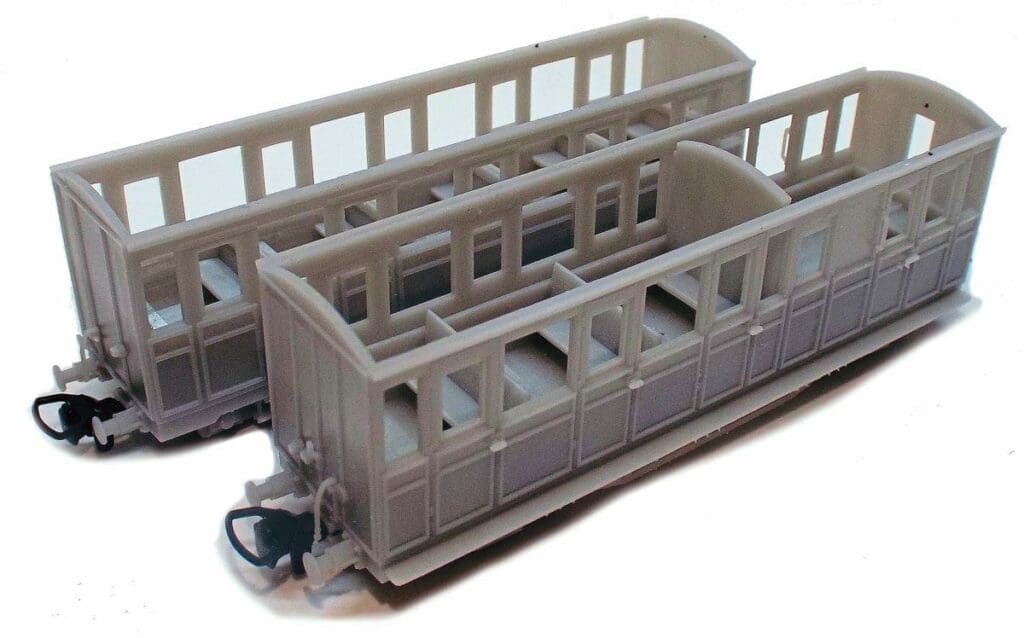
Advert
 Enjoy more Heritage Railway reading in the four-weekly magazine. Click here to subscribe.
Enjoy more Heritage Railway reading in the four-weekly magazine. Click here to subscribe.



